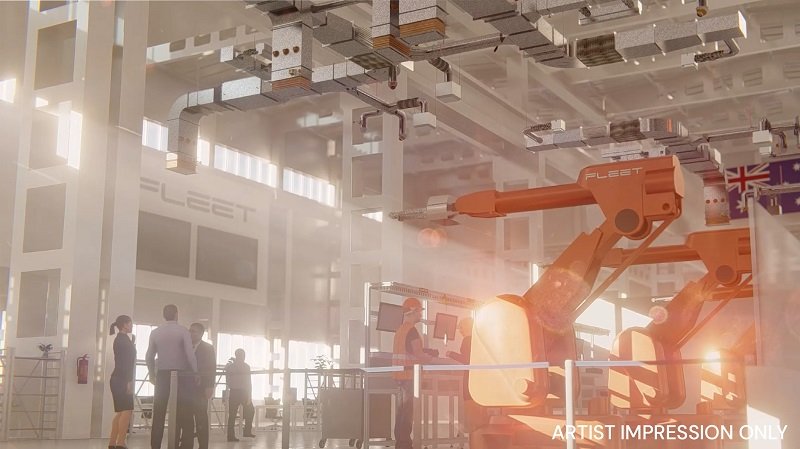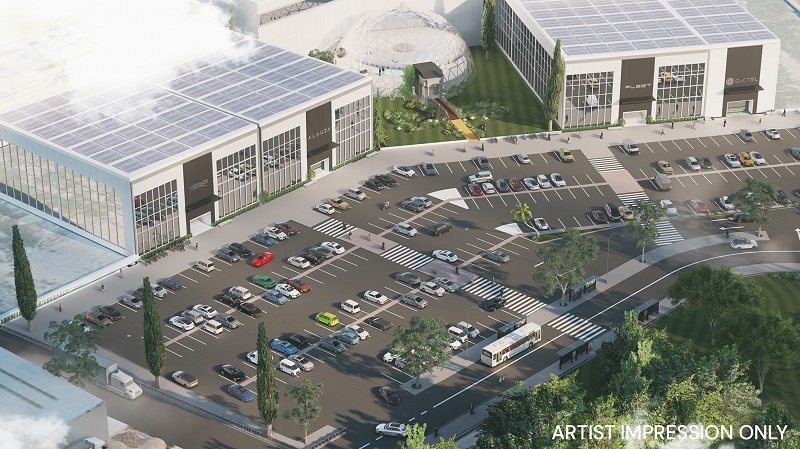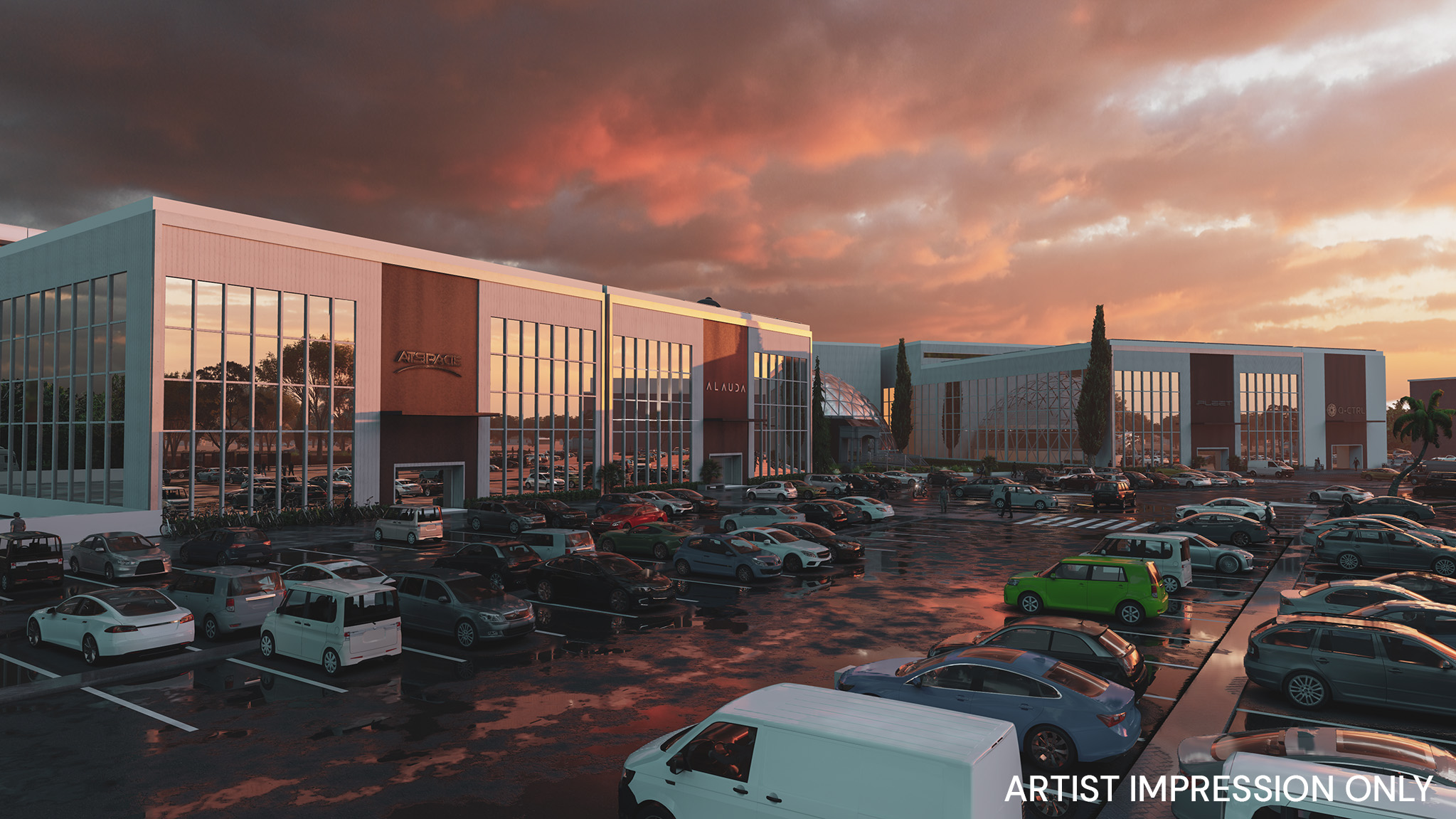Fleet Space Technologies, the Australian space startup that launched the country’s first four commercial nanosatellites, announced its future strategy led by the development of a new constellation of 3D printed small satellites known as Alpha. To achieve that goal, Fleet Space will establish a satellite Hyper Factory in the newly announced first dedicated space manufacturing hub, called Australian Space Park in Adelaide, backed by an AU$20 million ($14 million) investment from the South Australian Government.
Leveraging experience and learnings from the successful operation of the company’s growing constellation of small satellites, Fleet Space’s new constellation will expand its coverage reach and provide down to sub-seconds latency, providing an extremely cost-effective means to unlock unprecedented connectivity more quickly and in more locations, however remote. Once the first 3D printed Alpha satellites launch to low Earth orbit (LEO) in 2022, they will sit next to its existing Centauri constellation of CubeSat’s used for global satellite connectivity to the Internet of things (IoT).
https://youtu.be/tuv_2DOhnt0
Empowered by a recent $26.4 million Series B round, the startup has expanded the scope of its dedicated research and development arm to create the 3D printed Alpha small satellite, which integrates Fleet Space’s advanced beamforming technology that uses an array of multiple 3D printed all-metal antennas along with cutting edge Digital Signal Processing.
The technology provides a substantial increase in the throughput of customer IoT data. In addition, it can serve more customer terminals at once by generating a high number of highly-directional low-interfering beams in point-to-point satellite communications. Fleet Space defines integrating this digital beamforming into a low orbit satellite––not much larger than a half a square meter––as “a world first.”
Having fabricated the first metal 3D printed patch antennas for small satellites, Fleet Space has a track record in advanced manufacturing technologies like 3D printing. The Alpha satellites will have up to 64 of these antennas onboard versus only four in the Centauri satellites, which are already advanced space communications systems. This represents a 16-fold increase in performance while being only four times heavier.
Commenting on the new satellites, CEO and founder Tata Nardini said, “It is Fleet Space’s vision that everyone, everywhere, has access to unlimited connectivity, no matter where they are on the globe, in cities, remote regions, on land, or navigating the oceans. Our recent Series B investment empowered us to realize this vision by embarking on a bold new strategy. This new chapter in our story is led by the development of a new constellation of satellites named Alpha, which will work in harmony with our existing Centauri constellation. Alpha represents a major step forward and the first time a satellite has been created entirely through 3D printing. By bringing together the creation, deployment, and service of space technology this is a clear statement of our intent to become a global leader in space technology, and to support Australia’s ambition to lead this critical field.”

Fleet Space Technologies manufacturing capabilities concept image. Image courtesy of Fleet Space Technologies.
Designed, engineered, and manufactured on South Australia’s coastal capital of Adelaide, the upcoming Alpha satellites will be part of the country’s space strategy aiming to triple the space sector’s GDP contribution to over $12 billion per year. The Australian Space Park in which Fleet Space will build a Hyper Factory will be the first in the southern hemisphere. Four companies, Fleet Space Technologies, Q-CTRL, ATSpace, and Alauda Aeronautics, will co-locate in a purpose-built facility focusing on collaboration and production of small satellites and their payloads, rockets, electric vertical take-off and landing vehicles (eVTOL), and supporting componentry and technical systems.
In the heart of Australia’s so-called “Space State,” the new space manufacturing hub is expected to accelerate the expansion of Fleet Space’s in-house R&D arm, and in turn, help the entire industry progress. Even more so, according to South Australia Premier Steven Marshall, the creation of the hub signals the local government’s commitment to the region and the country’s space sector by bridging the gap between R&D and prototyping to production at scale.
“It is the next step in positioning Australia’s space community to deliver the entire space value chain – enabling the design, manufacture, launch, and mission control of NewSpace capabilities,” remarked Marshall.
Potentially located at Adelaide Airport, the Australian Space Park will need to be close to traditional aerospace companies and the central business district, and Adelaide’s innovation precinct, known as Lot Fourteen, which is home to a growing community of space businesses. As the centerpiece of the nation’s space endeavors, the state is already home to the Australian Space Agency and Mission Control and targets an annual growth rate in the space sector of 5.8% over the next decade.
Such rapid growth rates could signal that Australia is on track to becoming a global leader in space technology. The nation itself relies heavily on it to power the everyday lives of its people––from communication services to Earth observation for navigation purposes and weather forecasting.
Furthermore, homegrown Australian technology is already supporting the broader space industry. For example, Fleet Space will join the Seven Sisters, an Australian space industry consortium supporting NASA’s Artemis program, set to land the first woman and next man on the Moon no earlier than 2025. Commencing in 2023, the Seven Sisters missions are designed to find accessible water and other resources on the lunar surface.
Subscribe to Our Email Newsletter
Stay up-to-date on all the latest news from the 3D printing industry and receive information and offers from third party vendors.
Print Services
Upload your 3D Models and get them printed quickly and efficiently.
You May Also Like
Heating Up: 3D Systems’ Scott Green Discusses 3D Printing’s Potential in the Data Center Industry
The relentless rise of NVIDIA, the steadily increasing pledges of major private and public investments in national infrastructure projects around the world, and the general cultural obsession with AI have...
3DPOD 260: John Hart on VulcanForms, MIT, Desktop Metal and More
John Hart is a Professor at MIT; he´s also the director of the Laboratory for Manufacturing and Productivity as well as the director of the Center for Advanced Production Technologies....
Etsy Design Rule Change Reduces Selection of 3D Printed Goods
Online marketplace Etsy has implemented a rule change requiring all 3D printed goods on the site to be original designs. The update to the site’s Creativity Standards states, ¨Items produced using...
E-Beam OEM Wayland Additive Partners with USC Racing to 3D Print Titanium Exhaust Collector
Every year, standards organization SAE International holds a competition called Formula SAE, in which students from both undergraduate and graduate programs design, build, and race small formula-style race cars. For...



































